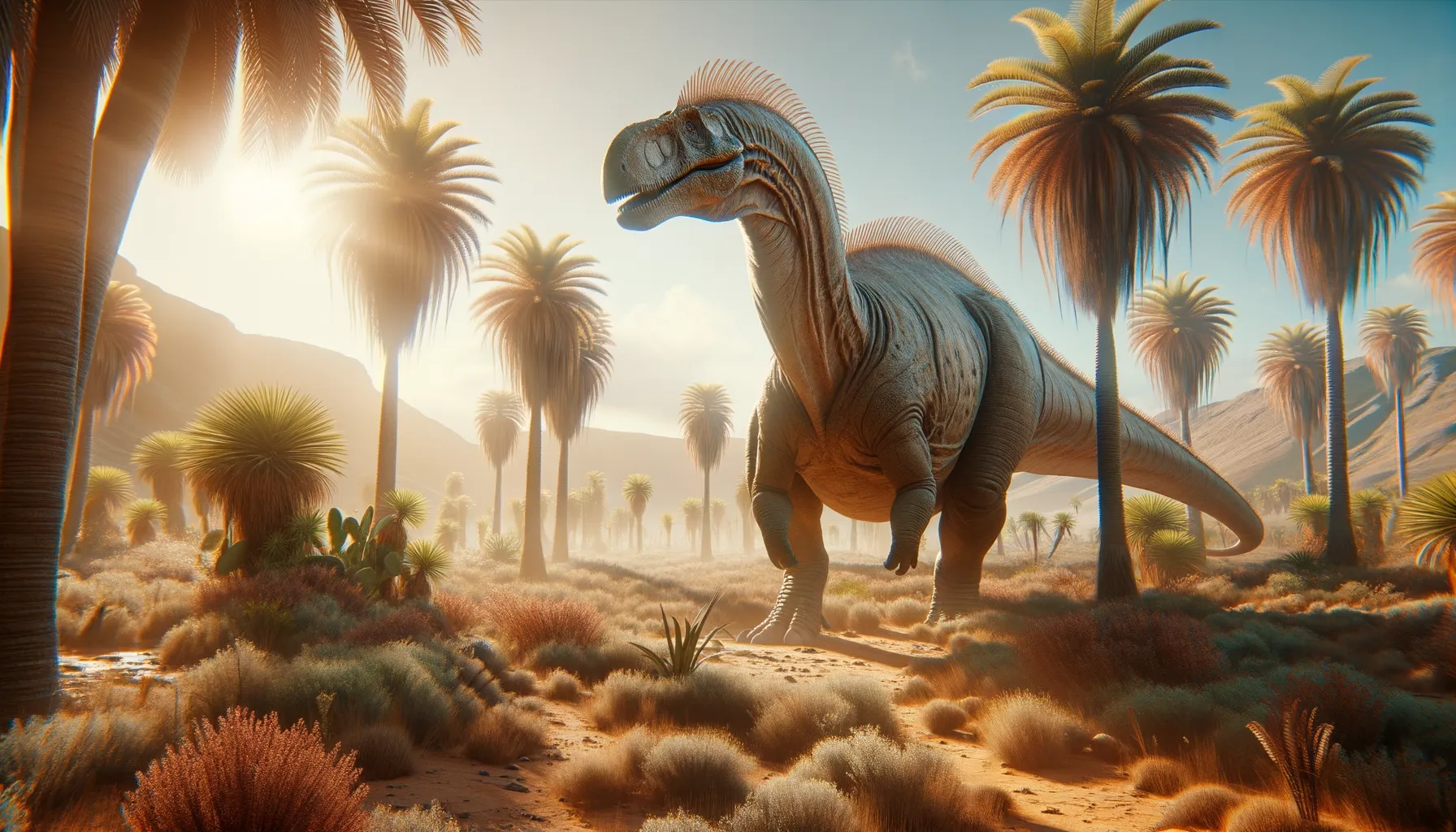
Lurdusaurus
Gentle giant of the Cretaceous plains.
Period
Cretaceous
Length
Up to 30 feet long.
Height
About 6 feet at the hip.
Weight
Approximately 5 tons.
Lurdusaurus, a plant-eating dinosaur, lived during the Early Cretaceous period, approximately 115 million years ago. It was a heavily built creature, reminiscent of a giant sloth in terms of size and shape, with a long neck and broad, barrel-like body. The first fossils were discovered in the arid lands of Niger, Africa. As an herbivore, Lurdusaurus likely grazed on vegetation growing close to the ground, using its robust limbs for movement and support.
Diet
Lurdusaurus was a herbivore, feeding primarily on low-lying vegetation. Its strong and sturdy limbs suggest it was designed to tear and consume tough plant material.
Hunting
Being an herbivore, Lurdusaurus did not hunt. Instead, it would forage plants and possibly fruit found in its environment. It likely spent most of its time grazing quietly on vegetation.
Environmental challenges
Lurdusaurus faced challenges with predators, which included large carnivorous dinosaurs that roamed the same period. Its size and tough build likely offered some defense, though it needed to navigate difficult terrains and climate changes that marked the Cretaceous period. Seasonal changes might have altered the availability of food resources, prompting migrations or adaptive foraging strategies.
Speed
It moved slowly due to its massive build.
Lifespan
Likely several decades, like other large dinosaurs.
First discovery
Discovered in Niger, Africa in the 1960s.
Fun Facts
- Lurdusaurus was a giant plant-eating dinosaur that lived about 112 million years ago during the Early Cretaceous period.
- Its name, Lurdusaurus, means 'heavy lizard,' due to its massive body size.
- Unlike many other dinosaurs, Lurdusaurus had a wide, almost barrel-like body, making it look somewhat like a giant turtle without a shell.
- This dinosaur is estimated to have been about 9 meters (30 feet) long and might have weighed as much as 5 tons.
- Lurdusaurus had relatively short legs compared to its body, suggesting it was more of a slow-moving grazer rather than a runner.
- The first fossil of Lurdusaurus was discovered in Niger, a country in West Africa, highlighting the diverse dinosaur life that once thrived there.
Growth and Development
Lurdusaurus, like other large dinosaurs, would have experienced a lengthy growth period, taking years to reach its full size. It likely grew rapidly during its early years to increase its chances of survival. Fossil evidence suggests distinct growth rings in bones, indicating periods of fast growth followed by slower development phases as it reached maturity.
Habitat
The habitat of Lurdusaurus consisted of lush floodplains and forested areas, providing ample plant matter for its diet. It may have lived near water sources, such as rivers or lakes, to aid in its foraging habits. This environment supported a rich diversity of plants and other herbivorous dinosaurs, creating a complex ecosystem where it thrived.
Interaction with other species
Lurdusaurus may have coexisted with various herbivorous and carnivorous dinosaurs, forming complex ecological interactions. It likely shared its habitat with other large herbivores, competing for the same plant resources. Predators might have been the primary threat, necessitating a need for vigilance and possibly protective behaviors within their social groups.
Natural lifespan
Lurdusaurus likely lived for several decades under natural conditions.
Reproduction
Like other dinosaurs, Lurdusaurus probably laid eggs as part of its reproductive strategy. The eggs would be incubated in nests made from vegetation, sand, or soil, left to develop and hatch on their own. After hatching, young Lurdusaurus faced many challenges, growing swiftly to reach a size that offered them greater protection from predators.
Social behaviour
Lurdusaurus may have lived in small, loosely organized groups to help protect themselves against predators. These groups could move together to access better resources and collectively defend against threats. However, specific social structures or behaviors remain largely speculative due to limited fossil evidence.
Fossil locations
The most significant fossils of Lurdusaurus were found in the Elrhaz Formation in Niger, Africa. This region is rich with Cretaceous period fossils, providing key insights into the diverse ecosystem. The discovery of Lurdusaurus remains in this area underscores the historical abundance of herbivorous dinosaurs in that part of the African continent.
